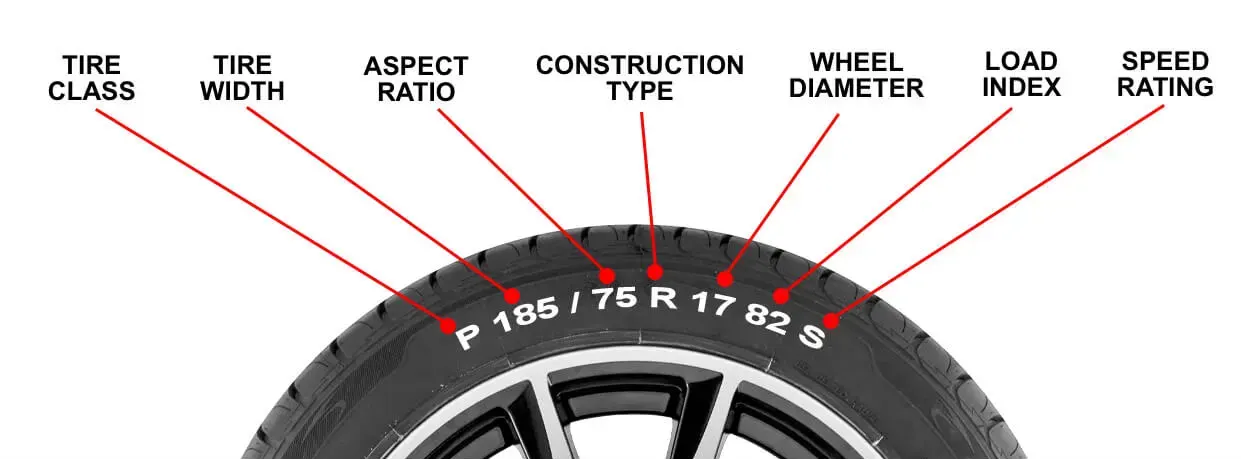
Tire Specifications: Understanding the Basics
When it comes to maintaining your vehicle, one of the most important components to consider are the tires. Not only do they affect the overall performance of your vehicle, but they also play a crucial role in keeping you safe on the road. Understanding tire specifications is key to ensuring that you are selecting the right tires for your vehicle and keeping them properly maintained.
Tire specifications can be overwhelming and confusing, but they provide important information about the tire's size, load capacity, speed rating, and more. Deciphering the Tire Identification Number (TIN) is a great place to start when it comes to understanding tire specifications. This number provides information about the tire's manufacturer, size, and production date. By understanding the TIN, you can ensure that you are selecting the right tire for your vehicle and that it is not too old or worn.
Overall, understanding tire specifications is crucial to maintaining the safety and performance of your vehicle. By selecting the right tire for your vehicle, keeping them properly maintained, and understanding the TIN, you can ensure that your tires are in top condition and that you are safe on the road.
Key Takeaways
- Understanding tire specifications is crucial to maintaining the safety and performance of your vehicle.
- Deciphering the Tire Identification Number (TIN) is a great place to start when it comes to understanding tire specifications.
- By selecting the right tire for your vehicle, keeping them properly maintained, and understanding the TIN, you can ensure that your tires are in top condition and that you are safe on the road.
Understanding Tire Specifications
When it comes to buying new tires, understanding tire specifications is crucial. It can be overwhelming to decipher all the numbers and letters on the sidewall of a tire, but it's important to know what they mean to ensure you get the right tire for your vehicle.
Tire Size
Tire size is one of the most important specifications to consider when purchasing new tires. It is indicated on the sidewall of the tire and is expressed as a series of numbers and letters. The first number represents the tire's width in millimeters, followed by the aspect ratio, which is the height of the tire's sidewall as a percentage of its width. The final number is the tire's diameter in inches.
Aspect Ratio
The aspect ratio is the height of the tire's sidewall as a percentage of its width. A lower aspect ratio means a lower profile tire, which typically provides better handling and a sportier look. However, a lower profile tire may also result in a harsher ride and increased road noise.
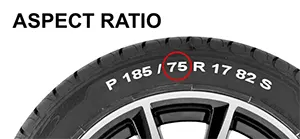
Section Width
The section width is the measurement of the tire from sidewall to sidewall in millimeters. It is important to choose a tire with the appropriate section width for your vehicle to ensure proper fitment and handling.
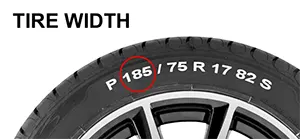
Diameter
The diameter is the measurement of the tire from one end to the other in inches. It is important to choose a tire with the appropriate diameter for your vehicle to ensure proper fitment and handling.
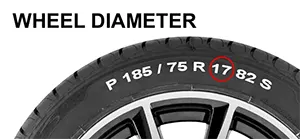
Speed Rating
The speed rating indicates the maximum speed a tire can safely handle. It is typically represented by a letter, with higher letters indicating higher speed ratings. It is important to choose a tire with a speed rating that matches or exceeds the maximum speed of your vehicle.
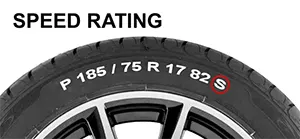
Load Index
The load index indicates the maximum weight a tire can safely carry. It is typically represented by a number, with higher numbers indicating higher load capacities. It is important to choose a tire with a load index that matches or exceeds the weight of your vehicle and any additional weight it may carry.
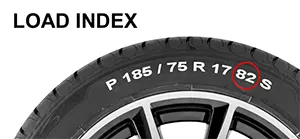
In conclusion, understanding tire specifications is crucial when purchasing new tires. By considering the tire size, aspect ratio, section width, diameter, speed rating, and load index, you can ensure that you get the right tire for your vehicle.
Deciphering the Tire Identification Number (TIN)
When it comes to understanding tire specifications, one of the most important pieces of information you need to know is the Tire Identification Number (TIN). The TIN is a unique code that is printed on the sidewall of every tire, and it contains a wealth of information about the tire's size, construction, and manufacturing details. In this section, we'll break down the TIN and explain what each part of it means.
Brand
The first two characters of the TIN represent the tire manufacturer's identification code. This code is assigned by the Department of Transportation (DOT) and is used to identify the company that produced the tire. For example, the code "BF" represents Bridgestone/Firestone, while "MI" represents Michelin.
Category
The next two characters of the TIN represent the tire category. This can be either a letter or a number, and it indicates the type of tire the TIN is describing. For example, "P" represents a passenger car tire, while "LT" represents a light truck tire.
Metric Tire
If the tire is a metric tire (which is common on European vehicles), the next three characters of the TIN will be numbers that represent the tire's width, aspect ratio, and rim diameter. For example, a tire with a TIN of "205/55R16" has a width of 205 millimeters, an aspect ratio of 55 percent, and a rim diameter of 16 inches.
P-Metric
If the tire is a P-metric tire (which is common on American vehicles), the next two characters of the TIN will be a number that represents the tire's section width in millimeters, followed by a slash, and then another number that represents the tire's aspect ratio. For example, a tire with a TIN of "225/60R16" has a section width of 225 millimeters and an aspect ratio of 60 percent.
Euro-Metric
If the tire is a Euro-metric tire (which is also common on European vehicles), the next two characters of the TIN will be a number that represents the tire's section width in millimeters, followed by a slash, and then another number that represents the tire's aspect ratio. For example, a tire with a TIN of "225/45R17" has a section width of 225 millimeters and an aspect ratio of 45 percent.
TIN
The final four digits of the TIN represent the tire's manufacturing date. The first two digits indicate the week of the year in which the tire was manufactured (ranging from "01" to "52"), while the last two digits indicate the year of manufacture. For example, a tire with a TIN ending in "2319" was manufactured in the 23rd week of 2019.
By understanding the information contained in the TIN, you can make more informed decisions about which tires are right for your vehicle. Whether you're looking for a specific brand, category, or size of tire, the TIN can help you find exactly what you need.
Types of Tires
When it comes to tires, there are many different types available on the market. Each type is designed to perform best under specific conditions, so it's important to choose the right type of tire for your vehicle and driving needs. In this section, we'll cover the most common types of tires and their sub-categories.
All-Season Tires
All-season tires are designed to provide reliable performance in a wide range of weather conditions, including dry, wet, and light snow conditions. They are a popular choice for drivers who live in areas with moderate climates and don't experience extreme weather conditions. All-season tires are available in a variety of sizes and tread patterns, making them suitable for most passenger cars and light trucks.
Winter Tires
Winter tires, also known as snow tires, are designed to provide superior traction and handling in snow, ice, and cold weather conditions. They have a special tread pattern and rubber compound that stays pliable in cold temperatures, allowing the tire to grip the road better. Winter tires are recommended for drivers who live in areas with harsh winter conditions and frequently encounter snow and ice on the roads.
Passenger Car Tires
Passenger car tires, also known as P-metric tires, are designed for use on passenger cars, minivans, light-duty pickup trucks, and SUVs. They are available in a wide range of sizes and tread patterns to suit different driving needs. Passenger car tires are designed to provide a comfortable ride, good handling, and long tread life.
Trailer Tires
Trailer tires are designed specifically for use on trailers, including travel trailers, boat trailers, and utility trailers. They are available in bias-ply and radial construction and are designed to carry heavy loads while providing good stability and durability. Trailer tires are not designed for use on passenger cars or light trucks and should not be used interchangeably.
Light Truck Tires
Light truck tires, also known as LT tires, are designed for use on light-duty pickup trucks, SUVs, and vans. They are available in a wide range of sizes and load-carrying capacities to suit different vehicles and driving needs. Light truck tires are designed to provide good handling, durability, and off-road performance.
Motorcycle Tires
Motorcycle tires are designed specifically for use on motorcycles and are available in a variety of sizes and tread patterns to suit different types of riding. They are designed to provide good handling, stability, and durability on both wet and dry roads. Motorcycle tires should be replaced when the tread depth reaches the wear indicators or when the tire is damaged or worn out.
That concludes our overview of the different types of tires available on the market. Remember to choose the right type of tire for your vehicle and driving needs to ensure safe and reliable performance on the road.
Tire Construction
When it comes to tire construction, there are two main types: radial tires and bias-constructed tires. Each type has its advantages and disadvantages, and it's important to understand the differences between the two before making a purchase.
Radial Tires
Radial tires are constructed with the cords of the tire running perpendicular to the direction of travel. This construction allows for better traction, improved fuel efficiency, and a smoother ride. Radial tires are also less prone to overheating than their bias-constructed counterparts.
Bias-Constructed Tires
Bias-constructed tires, also known as diagonal tires, are constructed with the cords of the tire running at a 45-degree angle to the direction of travel. This construction allows for more flexibility and durability, making them ideal for heavy-duty applications. However, bias-constructed tires tend to have a rougher ride and lower fuel efficiency than radial tires.
When choosing between radial and bias-constructed tires, it's important to consider the specific needs of your vehicle and the conditions in which you'll be driving. Radial tires are generally better for everyday driving, while bias-constructed tires are ideal for heavy-duty applications such as construction and mining.
In addition to the type of construction, there are other factors to consider when choosing a tire, such as tire type and size. It's important to choose a tire that is appropriate for your vehicle and the conditions in which you'll be driving.
Overall, understanding tire construction is essential when it comes to choosing the right tire for your vehicle. By considering the pros and cons of each type of construction, you can make an informed decision that will help ensure the safety and performance of your vehicle.
Selecting the Right Tire for Your Vehicle
When it comes to selecting the right tire for your vehicle, there are several factors to consider. In this section, we will explore some of the most important considerations that will help you make an informed decision.
Vehicle Manufacturer Recommendations
One of the first things to consider when selecting a tire is your vehicle manufacturer's recommendations. This information can typically be found in your owner's manual or on the placard located on the driver's side door jamb. The manufacturer's recommendations will provide you with important information such as the correct tire size, load capacity, and speed rating for your vehicle. It's important to follow these recommendations to ensure that your vehicle performs optimally and safely.
Owner’s Manual and Placard Consultation
Consulting your owner's manual and placard is an important step in selecting the right tire for your vehicle. Your owner's manual will provide you with valuable information about your vehicle, including the recommended tire size, load capacity, and speed rating. The placard, located on the driver's side door jamb, will also provide you with important information about your vehicle's tire specifications. Be sure to consult these resources before selecting a tire for your vehicle.
Tire Professional Consultation
If you're still unsure about which tire is right for your vehicle, it's always a good idea to consult with a tire professional. A tire professional can help you determine the best tire for your vehicle based on your driving habits, vehicle usage, and other factors. They can also provide you with valuable information about tire brands, types, and features, helping you make an informed decision.
In conclusion, selecting the right tire for your vehicle is an important decision that should be made carefully. By following your vehicle manufacturer's recommendations, consulting your owner's manual and placard, and seeking the advice of a tire professional, you can ensure that you select a tire that will provide optimal performance and safety for your vehicle.
Tire Maintenance
As responsible vehicle owners, it is important to properly maintain our tires to ensure their longevity and safety on the road. In this section, we will cover two key aspects of tire maintenance: inflation and wear.
Inflation
Maintaining proper tire inflation is crucial for both safety and performance. Underinflated tires can lead to decreased fuel efficiency, reduced handling and braking capabilities, and increased risk of blowouts. Overinflated tires can lead to a harsher ride, decreased traction, and uneven wear.
To determine the proper inflation pressure for your tires, refer to the inflation pressure specifications on the vehicle tire information placard and/or in your vehicle owner's manual. It is important to note that different vehicles may have different inflation pressure specifications for the same size tire.
We recommend checking your tire pressure at least once a month and before long trips. Use a reliable tire pressure gauge and ensure that the tires are cool before checking the pressure. If the pressure is too low, add air until it reaches the recommended level. If the pressure is too high, release air until it reaches the recommended level.
Wear
Regularly inspecting your tires for signs of wear is also important for maintaining their safety and performance. Worn tires can lead to reduced traction and handling, decreased fuel efficiency, and increased risk of blowouts.
Check your tires for signs of wear such as uneven tread wear, cracking, bulging, or punctures. If you notice any of these signs, have your tires inspected by a qualified tire service professional.
To maximize the life of your tires, rotate them regularly. Refer to your vehicle owner's manual for recommended rotation intervals. Additionally, avoid overloading your vehicle and driving on rough or uneven terrain, as these can accelerate tire wear.
By following these tire maintenance tips, we can ensure the safety and performance of our tires on the road.
Additional Information
How to Read Your Tire Size
Understanding how to read your tire size is crucial when it comes to buying new tires or understanding the specifications of your current ones. The tire size is usually located on the sidewall of the tire and is represented by a combination of numbers and letters.
The first number represents the width of the tire in millimeters, the second number represents the aspect ratio (the height of the tire's sidewall as a percentage of its width), and the letter represents the construction of the tire (R for radial, D for diagonal, and B for bias).
For example, if your tire size is P215/65R15, the tire width is 215 millimeters, the aspect ratio is 65%, and the tire is of radial construction. The last number represents the wheel diameter in inches.
Tire Sizing Guides
Tire sizing guides are valuable resources when it comes to finding the right tires for your vehicle. These guides provide information on tire size, speed rating, load index, and other important specifications.
When using a tire sizing guide, it is important to input the correct information about your vehicle, including the make, model, and year. This will ensure that the guide provides accurate results and recommendations.
Speed Rating Chart
The speed rating of a tire is represented by a letter that corresponds to a specific maximum speed. It is important to choose a tire with a speed rating that matches or exceeds the maximum speed of your vehicle.
The speed rating chart ranges from L (75 mph) to Y (186 mph). Tires with a higher speed rating tend to have better handling and performance, but may also have a shorter lifespan.
Load Index Chart
The load index of a tire is represented by a number that corresponds to a specific maximum load capacity. It is important to choose a tire with a load index that matches or exceeds the weight of your vehicle.
The load index chart ranges from 71 (761 lbs) to 126 (3,748 lbs). Tires with a higher load index tend to have a higher weight capacity, but may also have a stiffer ride.
In conclusion, understanding tire specifications is crucial when it comes to buying new tires or understanding the specifications of your current ones. By using tire sizing guides, speed rating charts, and load index charts, you can ensure that you choose the right tires for your vehicle.
Frequently Asked Questions
How to read tire sizes in inches?
Tire sizes are typically written in a code format on the sidewall of the tire. The first number in the code represents the width of the tire in millimeters. The second number represents the aspect ratio of the tire, which is the height of the tire's sidewall as a percentage of its width. The final number represents the diameter of the wheel in inches.
What are the specs of a tire?
Tire specs refer to the alphanumeric code found on a tire's sidewall, which provides essential information about the tire's dimensions, construction, load carrying capacity, and speed rating.
What do the tire numbers mean?
The numbers on a tire represent the tire's size and specifications. The first number represents the width of the tire in millimeters, the second number represents the aspect ratio of the tire, and the final number represents the diameter of the wheel in inches.
What do the 3 numbers mean on tire size?
The 3 numbers on a tire size code represent the width of the tire in millimeters, the aspect ratio of the tire, and the diameter of the wheel in inches, respectively.
Where can I find my tire specs?
You can find your tire specs on the sidewall of your tire. Look for the alphanumeric code that represents the tire's size and specifications.
How does tire size comparison work?
Tire size comparison involves comparing the dimensions of different tires to determine their compatibility with your vehicle. This can be done by comparing the width, aspect ratio, and diameter of the tires. It is important to ensure that the tires you choose are compatible with your vehicle's specifications.


